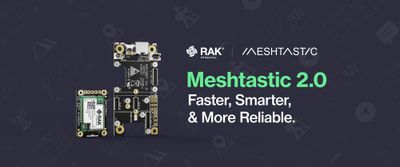WisNode Sensor Hub: Two important features that make it one of a kind!
We celebrated our Autumn Launch on October 20, 2022, and we presented a wide selection of new products for three of our product lines.
- WisBlock is now more complete with WisBlock Audio, which consists of microphones, amplifiers, DSP, and more tools that you can use for sound applications.
- WisGate has a new member joining the versatility of development with the robustness of industrial applications: the WisGate Connect.
- WisNode Sensor Hub is a ready-to-use product to connect sensors in professional environments.
We’ve told you about why we created WisGate Connect and why we considered WisBlock Audio necessary. Now, it’s time to learn about the Sensor Hub and its key features.
Why WisNode Sensor Hub?
With our WisBlock ecosystem, you have access to a large number of sensors for almost all applications. This may still involve additional work to select, connect, and program them to be useful in your IoT project, and that’s what we wanted to eliminate through the WisNode Sensor Hub. We offer a way to deliver a complete product to make the development and deployment process even easier.
WisNode Sensor Hub is an out-of-the-box device that includes three main parts: Sensor Hub, Sensor Probe, and Sensor Probe IO.
- The Sensor Hub is a smart data logger that allows you to configure and read sensor data. We made it easy to use, meaning you only need your smartphone and the WisToolBox app to configure its settings. In addition to that, it is capable of sending data via LoRaWAN® to an LNS such as Helium, The Things Networks, or even WisGate Edge gateways' built-in LNS.
- The Sensor Probe is a capsule that contains your connected and already selected WisBlock sensors. You can get a Sensor Probe with different sensors, depending on the application you are working on; options are available upon ordering.
- The Sensor Probe IO allows third-party sensors to function in your solutions and lets you connect sensors with different communication protocols. When you purchase the Sensor Probe IO, there is an option to acquire it individually or with an additional sensor, such as a Micro Weather Station or Soil Moisture, Temperature, Conductivity Sensor by Rika.
The Sensor Probe contains the preselected WisBlock sensors. The Probe IO connects third-party sensors to the hub. They are pre-configured and will be automatically recognized when you connect them. But how is it so easy? Well, we are going to explain the two main technologies that make it possible.
RAK OneWire Protocol
When we are developing projects, it is very common to select and connect many sensors. The ideal scenario is that all these sensors can have the same communication protocol, but in reality, sensors usually come with different communication protocols such as RS232/RS485, I2C, 4-20mA, and more. This type of connection would involve a lot of work and be read from a microcontroller. We ran into this problem and wanted to unify all these protocols into a single solution for proper implementation using a single cable, which is why RAK OneWire was implemented.
RAK OneWire is a half-duplex communication protocol that can work with low-power (3.3V) battery devices and enables automatic communication and identification. It works with Sensor Probe IO and allows the translation of distinct protocols with different numbers of wires to a single wire protocol. Some of its advantages are that you can connect up to 254 devices to its bus and transport data up to 100 meters.
NFC Activation
We’ve mentioned that configuring your settings can all be done through your mobile device and the WisToolBox app via BLE at any time. However, having BLE on all the time is not a good idea when you want to save power. To answer this, we utilized NFC, which simulates a switch or button in a low-consumption environment, allowing, in this particular case, to activate the BLE function for configuration, thus guaranteeing that the energy consumption is really low. That's why we decided to use the NFC reader installed on your mobile phone to activate BLE on the Sensor Hub, and then you can start setting it up.
Set it up in just a few steps.
- Select the WisBlock sensors you need and get them with the Sensor Probe. If you need a third-party sensor, you'll also need to get the IO Sensor Probe. The connection is easy, the probes are interchangeable, and you can connect up to 254 sensors thanks to the RAK OneWire function.
- Connect your Sensor Hub to a power source or battery.
- Open WisToolBox on your phone and pair the devices by simply bringing your phone closer to the Sensor Hub.
- Through NFC communication, the BLE will be activated, and you can start the configuration. The configurations of the probes and sensors will appear in the app.
- Set the parameters for the LoRaWAN® network to send data to the LNS you prefer, and that's it.
What’s next?
Now that you know more about Sensor Hub, we hope that this product meets your expectations and helps you develop your IoT project faster. If you want to know more about it, you can visit our RAK Documentation Center or follow us on our official YouTube channel, where we will be sharing more information.
Be one of the first to grab this new product; visit our store now!





